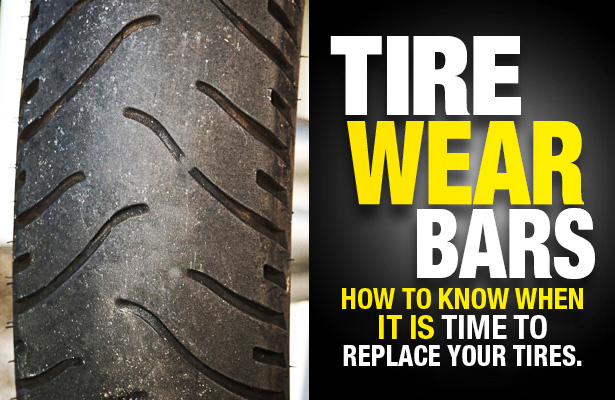Before they leave the manufacturing floor, tires are dated. This sets their lifespan in motion. You can determine how old your tires are by checking the Tire Identification Number (TIN) on the tire sidewall. The last four digits tell the week and year of manufacture. For example, 0221 represents the second week of 2021.
A common recommendation by industry insiders is to stop riding on motorcycle tires more than five years old. The new tires you buy, however, could already be a few years old. If you purchase tires from a reputable supplier that stores them correctly, it’s potentially safe to ride on them longer.
Some manufacturers will tell you that you can ride on tires until they’re 10 years old. So, five or 10? Even if your motorcycle tires look good to you after five years from the date they were manufactured, have them inspected each year by a tire professional. Motorcycle tires never last longer than 10 years. If your bike’s tires are older than this, you need to replace them.
Manufacturers cut grooves called rain sipes into street tires to disperse water on the road and provide traction. If you look at the edge of the tread on the motorcycle tire sidewall, you’ll find tread wear indicator (TWI) markings. At the TWI, you’ll find a raised bar across the tire in the rain sipes. When the tread has worn down to be level with that bar, your tires are worn out. Order new ones now.
Make inspecting your tires part of your routine, pre-ride motorcycle safety inspection. Motorcycle tires are vulnerable to wear and abuse from the road surface. Pull over and check your tires if you hit a pothole or run over debris.
Here are some tire defects you need to look for:
 Fractures could indicate the tire is failing. Cuts come from impacts on the road. If you see any of these, replace that tire.
Fractures could indicate the tire is failing. Cuts come from impacts on the road. If you see any of these, replace that tire.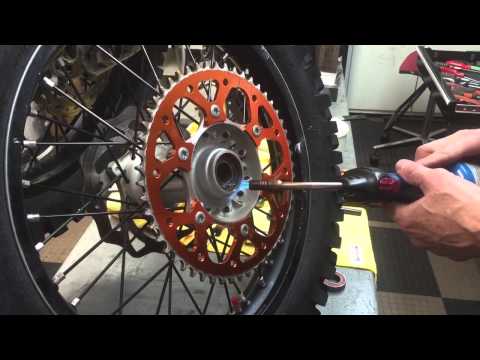
Don’t leave yourself unprotected if the unexpected happens on your next ride. Review your current coverage and get a free motorcycle insurance quote today.
It’s important to record your motorcycle’s mileage when you have new tires mounted. This gives you a starting point to track tire lifespan. Many riders expect to get the same mileage from each set of new tires, but tire life factors change over time. Experienced riders also consider factors like logging more two-up touring or track-like days in gauging their expectations and replacement plans.
How you store your motorcycle will also affect how long your motorcycle tires last. Exposure to the sun ages tires, as do temperature extremes and fluctuations. Generally, storing your bike in a garage will lengthen your tires’ lifespan. When you bring a motorcycle out from storage, it’s time to check your tires’ age and perform a careful inspection.
Your motorcycle tires connect you to the road—which is why it’s dangerous to try and get the last possible mile out of your tires. When the tread nears the wear marks or looks like it’s wearing unevenly, or your tires are showing signs of aging, it’s time for a new set.
You have many choices of motorcycle tires. Stay with your motorcycle manufacturer’s recommended size and don’t mix brands or types on the front and rear. Your best bet is to change both at the same time. A rear tire may wear out first, but a new set will give you better handling and may make your motorcycle feel new again.
Tires are the second-most frequently incurred expense in motorcycle maintenance after oil changes. While quality tires aren’t cheap, they’re worth it considering what rides on them. To discover more ways you can help protect your bike—and yourself—get a free, quick quote from Dairyland® today.
Till next time, ride safe!
The general information in this blog is for informational or entertainment purposes only. View our blog disclaimer.
View our blog disclaimer.
Having good tires is one of the most important things you can do to improve your motorcycle’s handling and safety. It’s arguably the most important thing, given that your tires are the only thing that connects your bike to the road. Many new riders may wonder when their tires should be changed.
Motorcycle tires should preferably be changed whenever the tread wears down, the tire squares off, the wear indicators show, the tire shows signs of age breakdown, or the tire becomes older than the acceptable age. This means you should be changing your motorcycle tires at least every 5 years.
There’s a bit more to understand when it comes to identifying these things on your own tires, as well as a lot to know about good things to look for in replacement tires. I’ll go more in depth on these things below.
Table of Contents
How Long Do Motorcycle Tires Last?Motorcycle tires can last anywhere from months to up to 5 years, depending on how often you use them and your riding style.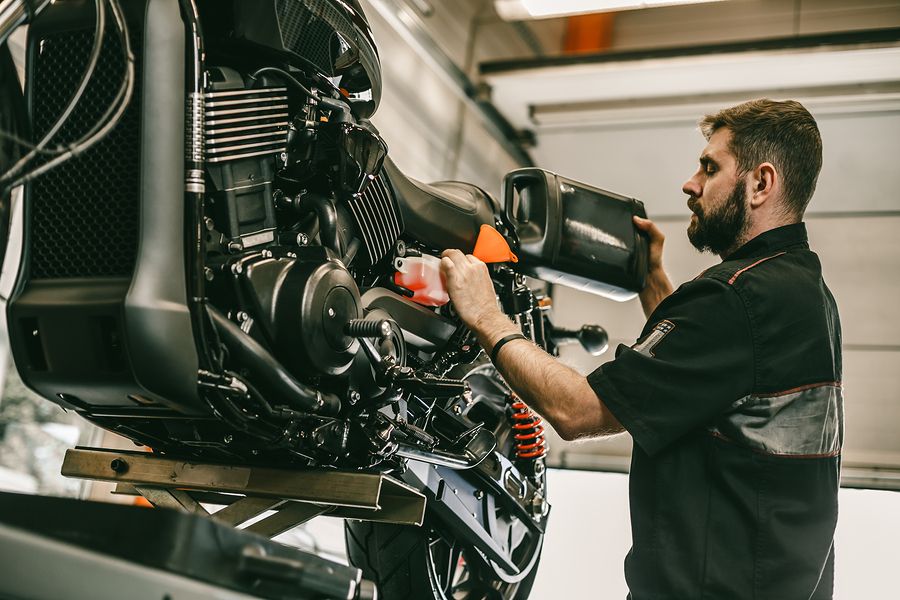 Age isn’t the only thing that dictates how often you should change your motorcycle tires though, as you also need to consider general wear and tear.
Age isn’t the only thing that dictates how often you should change your motorcycle tires though, as you also need to consider general wear and tear.
Motorcycle tires come in quite a few different shapes and sizes. High performance sports tires will have much softer rubber compounds that provide a lot more grip, but these compounds will also deteriorate more quickly than some others.
On the flipside, a less sporty budget tire will probably last significantly more miles, likely being made of a harder and less grippy rubber compound. This will of course vary from tire to tire and from manufacturer to manufacturer, but bike tires definitely wear at different rates.
Another factor that can really affect how long your tires last is the way you ride. Like any physical component, if tires are pushed to their physical limits more consistently, they’ll wear down much faster. If you ride your bike casually and don’t push your bike that often, your tires will probably last much longer.
If you ride hard though, your tires will show that. Pushing a bike to its limits will simply wear down the rubber compounds much faster and increase the frequency at which you need to replace your motorcycle tires.
On average, you’ll probably see about 5,000-10,000 miles of acceptable use from your bike tires. A significant number of riders may end up replacing their tires due to age-related concerns before they ever see that amount of mileage. This all depends on how much you ride.
RELATED ARTICLE Does Riding A Motorcycle Burn Calories?
When Should You Replace Your Motorcycle Tires?You should replace your motorcycle tires every 5 years at least, but more frequently than this if other wear factors indicate it’s time for a change. General wear and tear and breaching minimum legal tread limits are usually the deciding factors when it comes to replacing motorcycle tires.
There are a few things to look for as indicators that it’s time for a new set of tires. The first thing to look for is low treadwear. This is one of the easiest methods to accurately gauge how much life a tire has left.
The first thing to look for is low treadwear. This is one of the easiest methods to accurately gauge how much life a tire has left.
A tire needs proper tread to operate as intended. Most motorcycles have tire treads designed for adequate road grip, shedding water well and, in some cases, good grip in off-road situations. The treads need to be thick enough to do all of these things properly.
Every tire comes from the factory with a certain tread depth. If the tread gets too low the tire probably won’t be able to grip properly and is at more of a risk of blowouts or flats. The risks of these things exist in cars as well, but for motorcycles, the potential danger is much higher.
Given that motorcycles have so many unavoidable risks associated with them, eliminating the avoidable risks seems like an easy and prudent step to take. Making sure you’re not riding with worn out tires is one of these steps.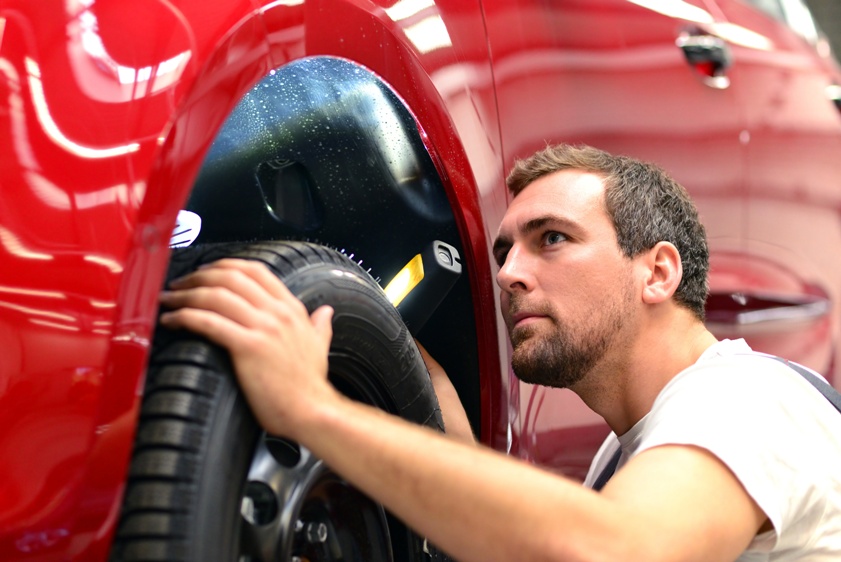 It can be some expense at times, but there’s something to be said against spending money on safety.
It can be some expense at times, but there’s something to be said against spending money on safety.
Another sign it’s time to change your tires is any damage or other such visible or obvious issues. If your tire suffers a puncture, obviously replace it. Especially if the tire is older, repairs may not always cut it. Also, in many cases, a puncture can be indicative of other issues, such as inadequate tread depth.
Other damage like dry rot or tire cracks can also herald an upcoming tire change. Older tires especially tend to develop issues such as this. Sometimes bikes end up sitting in a backyard or a musty garage for a significant portion of their life. Rubber, especially when exposed to the elements, will eventually just lose its structural integrity and start to crack.
RELATED ARTICLE Heavy vs Light Motorcycle: Which One Is Right For You?
How Much Tread Depth Do Motorcycle Tires Need?In most places motorcycle tires need a tread depth of about 1-2 mm, or 1-2/32nds of an inch.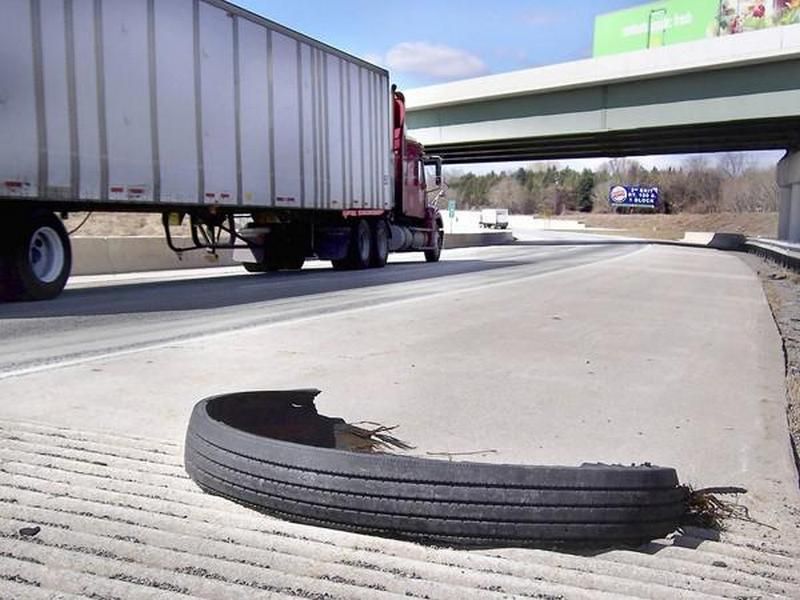 While you may or may not get prosecuted for having tires below that depth, in many cases you may want to replace your tires before they get to that level anyway in the interest of safety.
While you may or may not get prosecuted for having tires below that depth, in many cases you may want to replace your tires before they get to that level anyway in the interest of safety.
A legal limit is obviously not the same as a guide, and some motorcycle tires may really need replacing far before that point in the life of their treads. It will vary from tire to tire.
Measuring treads isn’t too hard to do, either. Simply stick a small object in your treads and measure the depth between the top of the tread and the bottom of the tread cavity. Compare that with a ruler or some other measuring device, and presto, tread wear measured.
Check to see what measurements are acceptable for your specific tire, and you should have a good idea whether or not your tires need to be replaced, and if not, how much life you can expect to see out of them.
This is an area where it’s important to do the research for the specific tire you have. Though there is certainly a minimum tread depth, there isn’t really a maximum. Different tires will have different depths from the manufacturer.
Though there is certainly a minimum tread depth, there isn’t really a maximum. Different tires will have different depths from the manufacturer.
Because of this, a certain measurement on one motorcycle tire compared to the same measurement on another might indicate different levels of wear and different remaining lifespans. Some tire treads will simply be produced with shallower depth than others.
Knowing where your tire is at in comparison to when it was produced can be just as useful, if not more useful than knowing what the exact depth itself is. By comparing those two figures, you can judge if your tires are safe to use, and if so, how long they will remain that way.
RELATED ARTICLE The 10 Best 500cc Motorcycles – The Ultimate Guide
How Often Should You Replace Your Motorcycle Tires?Beyond obviously apparent issues such as reduced tread and cracks, at some point motorcycle tires just expire. This may vary from tire to tire, but most manufacturers seem to quote around 5 years as the usual lifespan of their average motorcycle tire.
This may vary from tire to tire, but most manufacturers seem to quote around 5 years as the usual lifespan of their average motorcycle tire.
If you don’t know how old your tires are, don’t worry, as most tires have this imprinted on the tire itself. Look on your tire for “DOT” followed by a number. The last two digits of this number should be the year it was manufactured.
For example, if the last two digits are “19”, the tire was manufactured in 2019 and should probably be replaced in 2024. If your tire doesn’t have this information listed on it, chances are it’s way more than 5 years old.
Now, in reality, you can sometimes push tires past this 5 year mark. Of course, safety wise I cannot in good conscience recommend doing this, but it’s not like your tires hit 5 years and immediately stop working.
It would be a good idea to change them, but depending on what tires you have, what riding you do, and how you store your bike, you may be able to stretch them out a little further. Basic logic dictates that a motorcycle stored outside will probably use tires a bit faster than one kept in a garage.
Basic logic dictates that a motorcycle stored outside will probably use tires a bit faster than one kept in a garage.
Following the same basic logic, a bike that’s aggressively ridden constantly will have a shorter tire lifespan than one that’s casually ridden somewhat consistently. Again, after 5 years, replacing your tires is a good idea, but rather than simply replacing them right away, it’s worth having a mechanic look at them to tell you whether or not they’re still safe to use.
RELATED ARTICLE Can You Ride Your Motorcycle On The Beach? (The Truth)
Should You Always Replace Both Motorcycle Tires At The Same Time?You don’t have to replace both motorcycle tires at the same time. It will never hurt to replace both your front and rear tire at the same time, but it isn’t always necessary. If both of your tires have exceeded the safe age range or have other significant issues, of course it makes sense to do so.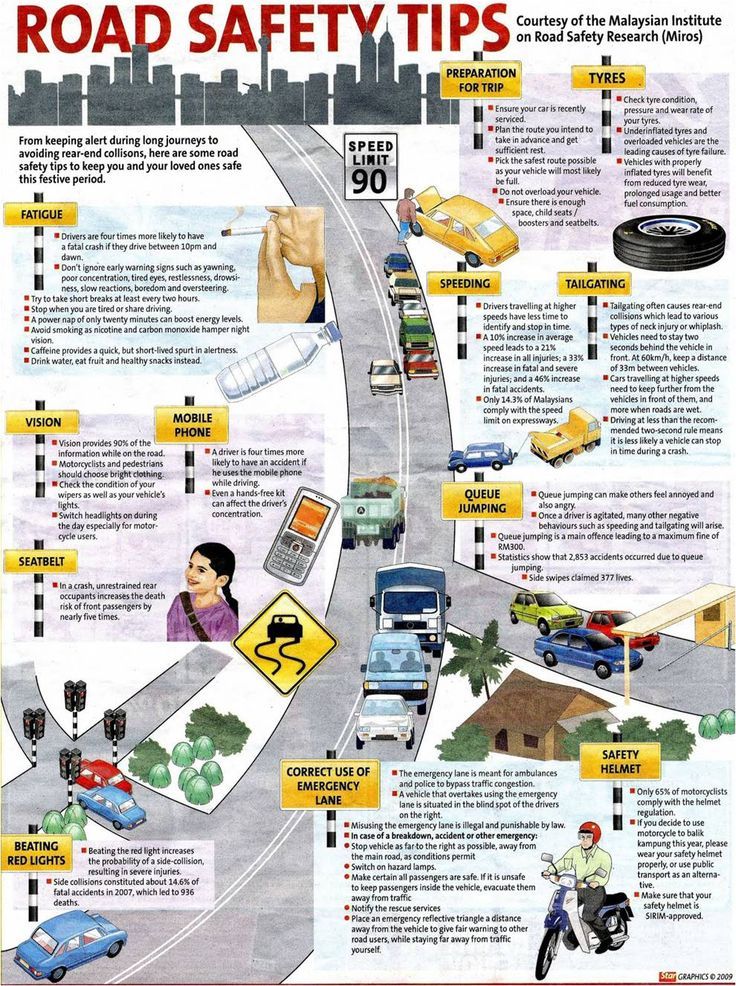
In general, rear tires tend to wear down way more quickly than front tires. This may not always be the case, but usually it will be. Rear tires get a lot more abuse. They generally have more weight on them and sometimes will spin a lot more. Many veteran riders change their front tire every other time they change their rear tire.
Really, it all comes down to if your tires are within the proper specifications. If one of them isn’t and one of them is, you can usually get away with just changing that one. There’s no sense replacing a perfectly usable tire if you don’t have to.
The only situation where this wouldn’t be true is if you’re changing the type or brand of tires on your bike. As long as you keep it consistent you should have no issues with replacing only one, but if you’re going to use a different tire, it may be worth it to buy a new full set.
Different brands, types, and models of tire will handle very differently.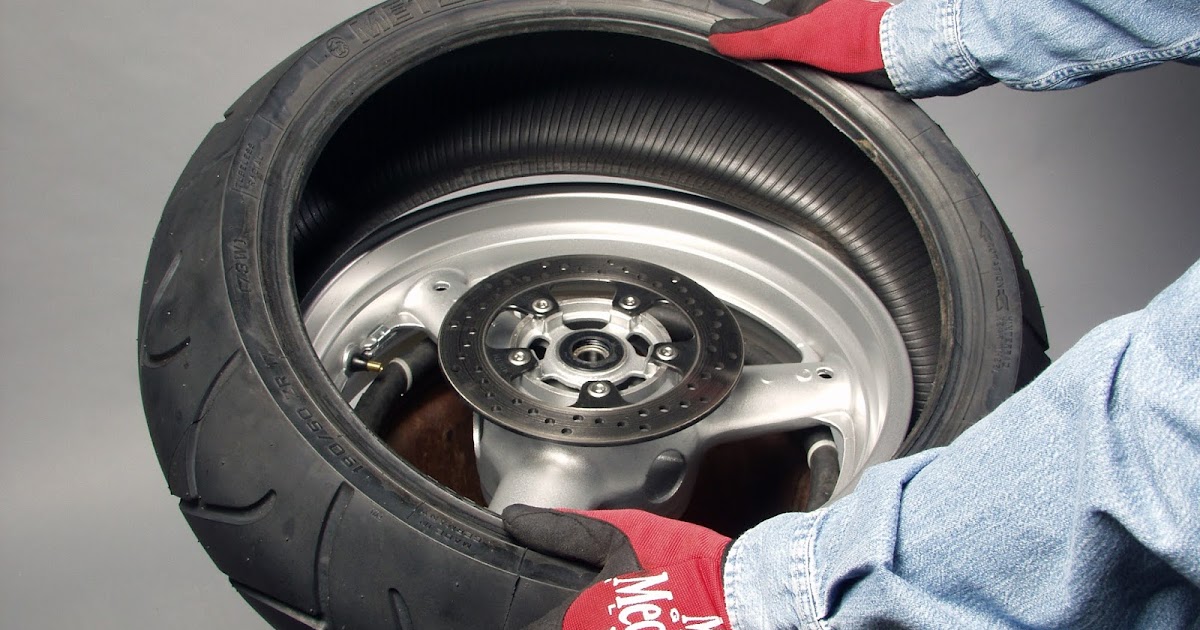 Even if a tire looks similar, the compounds within it can be very different. These differences can cause an imbalance of handling and grip that can be annoying or, at worse, dangerous.
Even if a tire looks similar, the compounds within it can be very different. These differences can cause an imbalance of handling and grip that can be annoying or, at worse, dangerous.
Modern motorcycles are founded on a delicate balance between all of the components of the machine itself and the laws of physics. If you throw off this balance, the bike can become compromised.
What Is A Squared Off Motorcycle Tire?When you ride a motorcycle, you’re not riding on 100% of the tire surface. Usually, it’s actually a very small percentage. If a tire is low on air or flat, it may be a much higher percentage, but a properly filled tire will have a relatively small contact patch.
Unlike car tires which have a large surface of contact with the road, motorcycle tires have a tiny amount that is actually being worn down when you ride. When you’re leaning through corners, you’re not riding on the bottom of the tire, but the side. However, when you’re riding straight, you’re just riding on the very bottom of the tire.
However, when you’re riding straight, you’re just riding on the very bottom of the tire.
If you ride straight more than you ride in the corners, this will start to affect the shape of your tire. If you don’t lean too much, the bottom of the tire will start to wear down at a greater rate than the sides of the tire. This creates a flat surface on an otherwise curved tire.
This is sometimes referred to as a “squared off” tire. This is just something that tends to happen to a lot of motorcycle tires after a long enough time, but it will happen more quickly if you do a lot of straight-line riding on a freeway, for example.
When a tire becomes squared off, it becomes much worse at handling in corners. It will just be a lot less smooth and may move around in weird ways. It’s not that it won’t work at all, but it will just become less and less effective over time.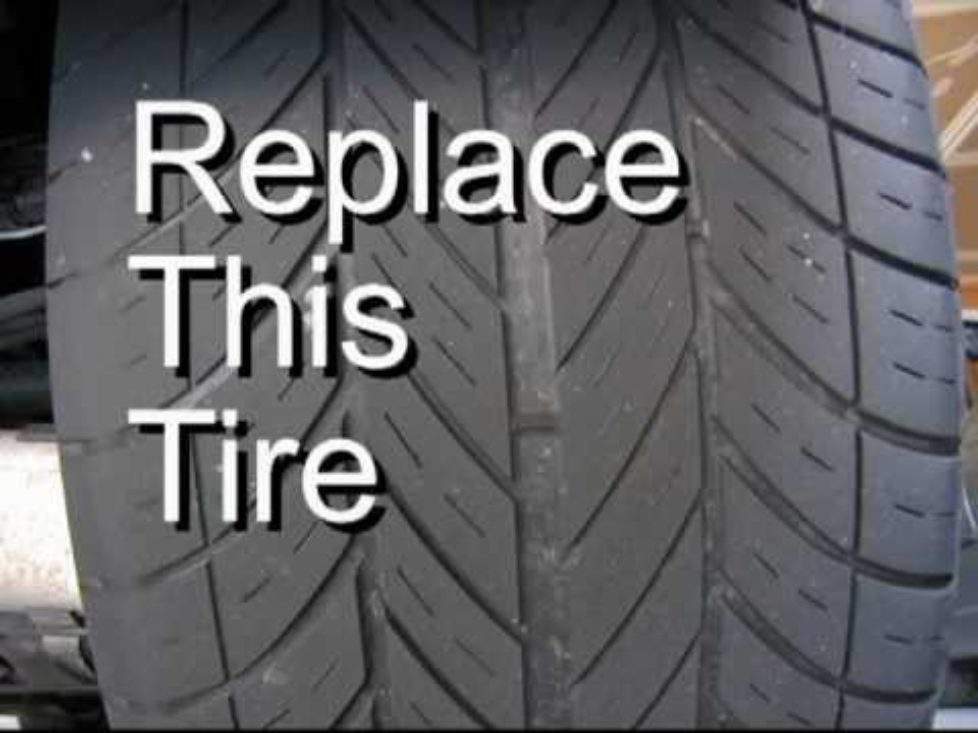 Bikes with squared off tires can feel squirrely and harder to control when turning. I doubt any riders enjoy this.
Bikes with squared off tires can feel squirrely and harder to control when turning. I doubt any riders enjoy this.
Many riders will replace tires as soon as signs of squaring off start to appear. Others will not care and not replace their tires until the wear lines appear, regardless of the somewhat jeopardized handling characteristics.
There’s not much you can do to avoid this occurring. A tire with a little squaring off isn’t a big deal, but the more severe it becomes, the less safe (and less enjoyable) it will be to ride on.
Truthfully, there isn’t really a right answer here. Different riders have different tolerances for the way squared off bike tires handle. A little squaring off is very common and if it’s light enough, you may not even notice while riding. A severely squared off tire should probably be replaced.
What Kind Of Motorcycle Tires Should You Get?This will of course depend on what sort of riding you want to do. If you’re riding a street bike with a good deal of power, having a tire that is up to the task is very important for the proper operation of a higher performance machine such as that.
If you’re riding a street bike with a good deal of power, having a tire that is up to the task is very important for the proper operation of a higher performance machine such as that.
If you’re riding something more off-road capable, maybe you’ll want some tires with a more aggressive tread. True street tires are almost completely incapable of riding off-road with any ease and will get stuck very easily.
Off-road tires, however, have the grippy tread patterns to deal with the rigors of rocks, gravel, dirt, and more. On the road, though, they are generally going to grip somewhat less than street tires. Not only do they have less rubber contact surface touching the road, but they also may be made of harder compounds.
Beyond the type of tire, there are also a dizzying number of brands available, especially if you have a common tire size on your bike. There are certainly better brands and worse brands, but the best way to end up with a good choice is to heavily research all the tires you’re considering and see what people who’ve actually used them have to say.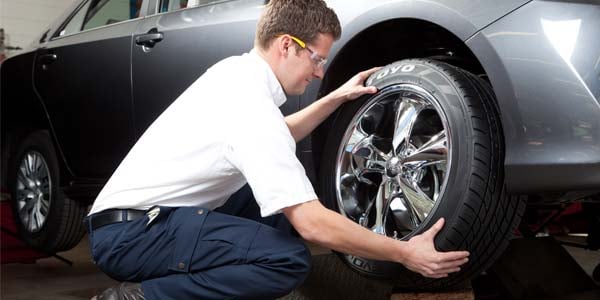
The other thing to keep in mind when looking for motorcycle tires is this: If at all possible, don’t buy used tires.In general, I’m a big proponent of using things until they break. I will always prefer to fix a thing rather than replace it.
When it comes to tires, however, this is not what I recommend. A tire is designed as a limited use item with a relatively short lifespan. More often than not, a used tire will be well past the acceptable age range for use, if it doesn’t have more serious issues such as tread separation or cracking.
It’s just not worth it to buy a used tire. Get a new tire, and you have the certainty that it’s new rubber, and that it’s unlikely to have any serious issues. Tires are literally the thing that keep your bike on the road. They’re what separates you from the ground and using good ones can help avoid crashes, injury, and death. It’s worth it to not skimp.
You should change your motorcycle tires at least every 5 years. Knowing when to change the tires on your motorcycle is an important part of maintenance. Changing them consistently can help prevent accidents and injuries, and overall can lead to a much better riding experience.
Motorcycle tire life is limited. Among the components of your motorcycle or scooter, tires are the most commonly used. With constant contact with the ground, they are subjected to strong friction, which accelerates their wear. Similarly, when riding a motorcycle, the tire runs across the entire width because the bikers lean the bike around corners.
That's why, even if you choose the most efficient and reliable models, they are always wears out after a few thousand kilometers . Of course, some categories, such as soft motorcycle tires, are less durable than road tires.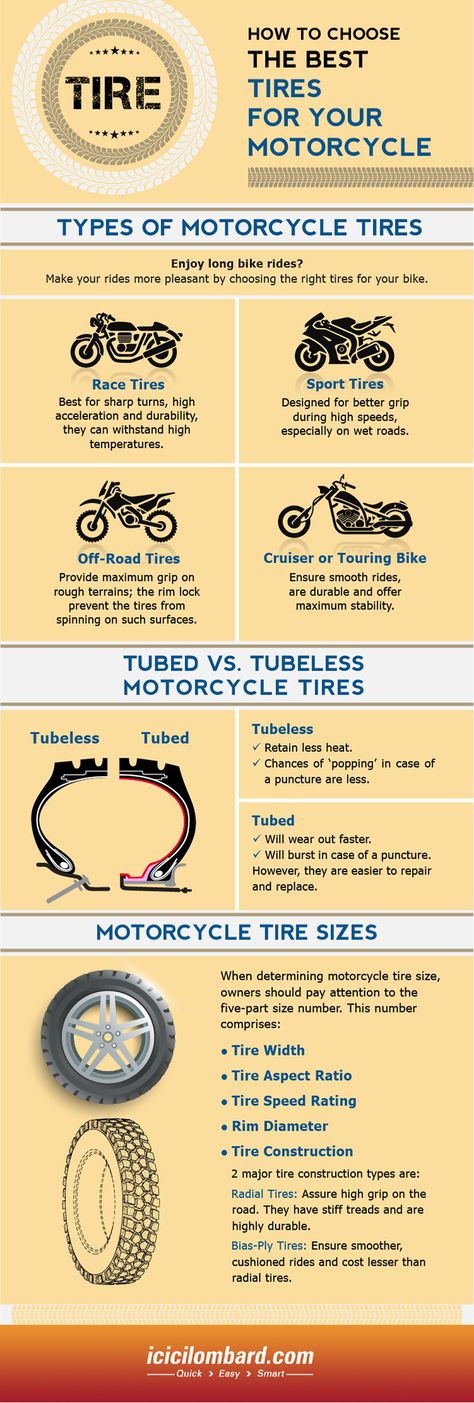
When the time comes, you will need to replace them. Why ? The reason is simple: driving with worn tires increases the risk of traffic accidents. In particular, the risk of falling during rain. The reason is that the traffic code forbids it and is punishable by law.
How long can you use motorcycle tires? What is their average life expectancy? When should motorcycle tires be changed? How to save them as much as possible? Find all information about the service life of a motorcycle tire as well as the factors affecting tire wear.
No tire manufacturer, whether car or motorcycle, gives an estimate of the life of each tire. Just because it's it's impossible to specify the durability of a tire.
The fact is that not all tires need to be produced at the same time. Similarly, they do not have the same specifications depending on the model. Thus, depending on these parameters, some of them may be more brittle and others more resistant.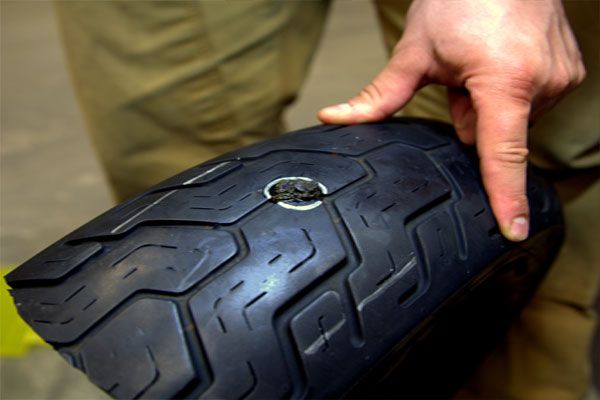
To find out the average life of your motorcycle tires, you must take into account the date of manufacture as well as the mileage with this tire. . The degree of wear depends on the latter. Tires degrade mainly based on the use and behavior of each rider.
Also note that tires rarely wear out at the same time. As a rule, the first to wear out are always those that stand behind. No matter what, driving a two-wheeler requires Replace front and rear tires at the same time For safety reasons.
In any case, please note that a tire, no matter how durable, cannot be used for more than ten years. In other words, this is recommended to be replaced at least once every ten years from the date of manufacture. This information is available on each tire on the sidewall.
As mentioned earlier, Motorcycle tire life depends on several parameters , including date of manufacture and distance travelled. However, other criteria can also influence this durability: maintenance frequency, driving style, type of road frequently traveled, model being driven, etc.
However, other criteria can also influence this durability: maintenance frequency, driving style, type of road frequently traveled, model being driven, etc.
Do you want your motorcycle tires to last longer? Don't want to constantly replace them? It's simple: support them regularly. Especially this maintenance is limited to ensuring the correct air pressure inside each tire . This is the only way to keep them in good condition for several years. With proper care, tires are more resistant to bumps and bumps.
So don't wait until your tires blow out to get them fixed. Check their pressure at least once a month, as a defect at this level can lead to deformation. If you notice cracks on them, contact a professional. He will be able to repair it and limit potential damage.
And bikers who ride motorcycles on the highway know this very well. They depressurize your bike's tires before riding on the track to improve traction.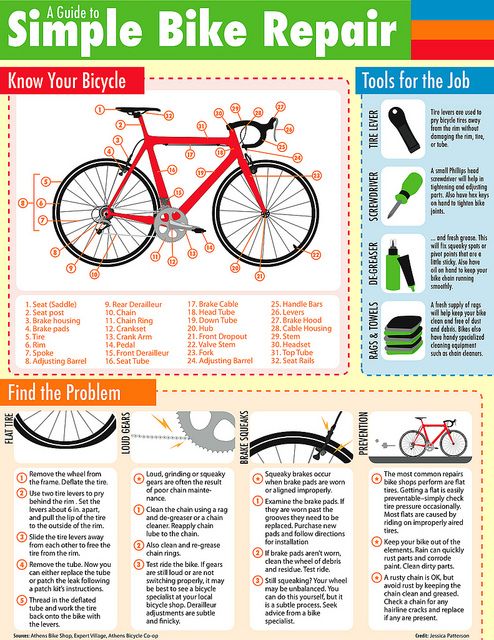 But it's lower pressure significantly accelerates the wear of tires.
But it's lower pressure significantly accelerates the wear of tires.
The way a rider rides can also affect the life of a motorcycle tire. As a general rule, tires wear faster in the following three cases :
In other words, the faster you drive and brake often, the more likely you are to permanently and prematurely damage your tires. Both contribute to the rapid consumption of chewing gum. Proof ? The tires of motorcycles that are driven on the track always wear out faster than the tires of motorcycles used on the road.
Tire durability also depends on the type of motorcycle you ride . Some motorcycles have indeed been designed to be more powerful, powerful and efficient than others. But this is often to the detriment of their tire.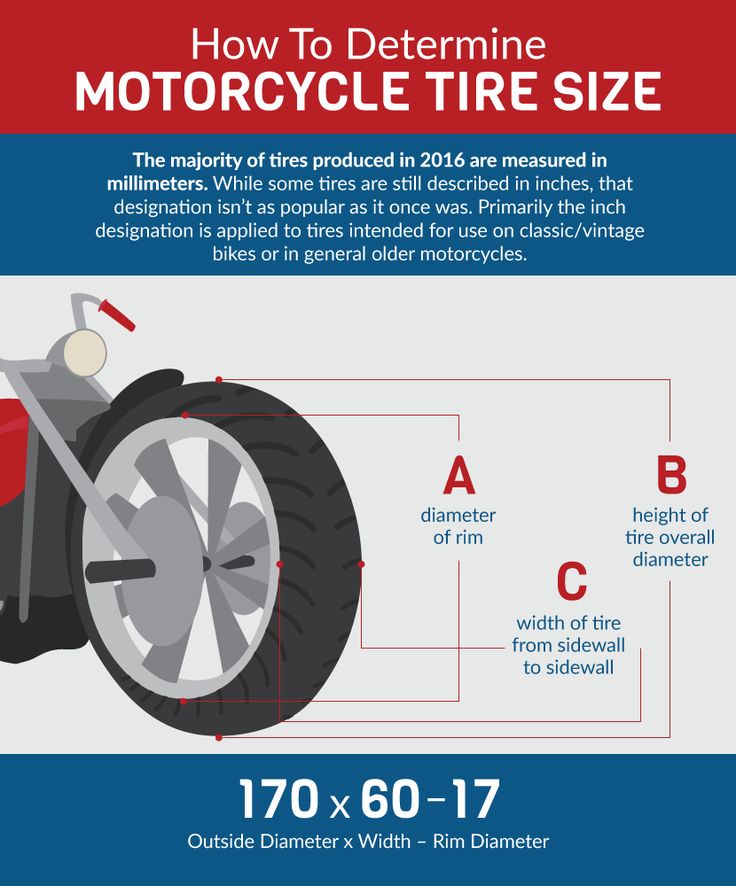
For example, if you ride a road bike, it's okay if your tires aren't badly damaged. Since you travel mostly in the city or on the highway, you rarely have the opportunity to accelerate and brake. Likewise, the motorcycle is equipped with tires suitable for this use.
On the other hand, if you are using a roadster, sports car, track, trial or roadster, these models risk damaging your tires a little faster. Why ? This is simply because these motorcycles are designed to ride at high speed, for long distances and often overland away from the city. Then they are also equipped with softer sports tires .
Mountain roads, with their series of curves and circuit races, are known to accelerate tire wear.
Many external factors can also play a role and shorten the life of a motorcycle tire:
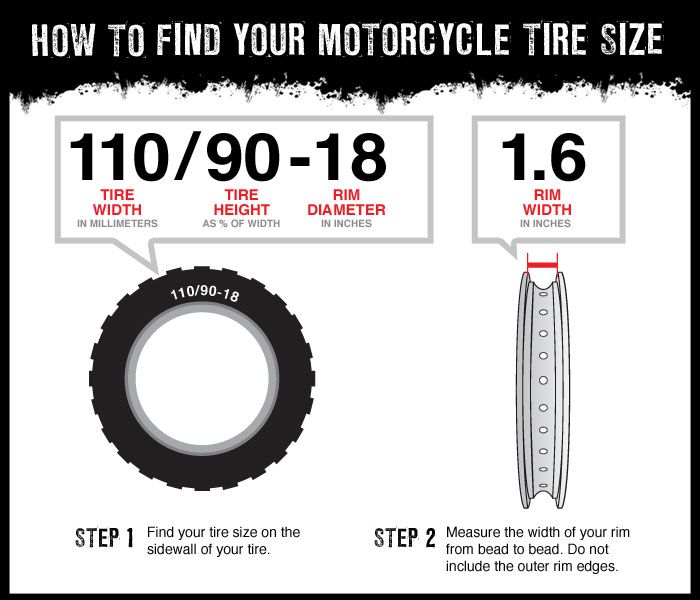
It is recommended to change motorcycle tires as soon as they show serious signs of wear . Driving with worn tires is an offense and can result in a fine of 90 euro in case of verification. Moreover, the police and gendarmes regularly check the condition of the tires of the two-wheeled vehicles they stop.
Therefore, if the manufacturer recommends changing the tires, for example, every 10. 000 kilometers, and you notice that they are no longer in good condition, it is better to replace them.
000 kilometers, and you notice that they are no longer in good condition, it is better to replace them.
If there are no obvious signs of wear, refer to the legal limit. You can determine this by looking at the sidewall of the tire. Usually wear indicators are placed there so that you know if the level of rubber is acceptable. If the height of the elastic band is exactly at the level of the indicator, this means that the limit has been reached. Thus, the tire is no longer usable. It needs to be replaced.
It's no secret that motor rubber is considered a consumable. Quite expensive, it must be said. We all remember from traffic rules tickets that motorcycle rubber wear is considered acceptable up to 0.8mm. But not to run with a ruler around the motorcycle every morning? Moreover, rubber wear is different, because not only a worn tread is the reason for replacing motor rubber.
Consider the reasons for changing tires:
The first and main reason rubber is scrapped. Tire tread wear is determined visually by indicator pointers. On the tire, if you carefully inspect it, there are special marks inside the tread pattern. These tubercles are not a manufacturing defect, but that little thing that tells you that it is dangerous to use rubber further. When the tread pattern is even with the bump, you should buy a fresh tire. It's simple, you don't even need a ruler.
Tire tread wear is determined visually by indicator pointers. On the tire, if you carefully inspect it, there are special marks inside the tread pattern. These tubercles are not a manufacturing defect, but that little thing that tells you that it is dangerous to use rubber further. When the tread pattern is even with the bump, you should buy a fresh tire. It's simple, you don't even need a ruler.
In fact, a tire wears out the fastest at two points in its life - during break-in and after tread wear. The smaller the pattern on the rubber, the faster it will become unusable, it is worse to keep the road and slide in every possible way on a wet surface. Just in case you think the rubber wears evenly and after the 0.8 mm critical point you still want to ride, I'll disappoint you, because after this point the rubber will begin to wear off at an amazing deserter speed.
Cold tires wear out more slowly than warm tires. By the way, tires with lower pressure warm up faster, and therefore wear out more intensively.
Low pressure affects wear at the edges of the tire, and high pressure contributes to abrasion in the center.
What did you think, bought a rubber, put it on and it will always be like new? Alas, nothing lasts forever under the moon, and even rubber is treacherously aging. The first signs that it is time for rubber to retire are cracks. Large or small, depends on storage conditions and how sad the tire is with life. Additional signs of the age of rubber - the color turns from black to gray, loss of elasticity, hardening and roughness of the surface.
It is logical that mechanical damage includes everything that has affected the rubber from the outside, the vast majority are impacts and punctures. Riding habits, bad landings, even the influence of suspension settings can damage the integrity of the tire.
The combustion of rubber and spools should be considered as a separate point here.